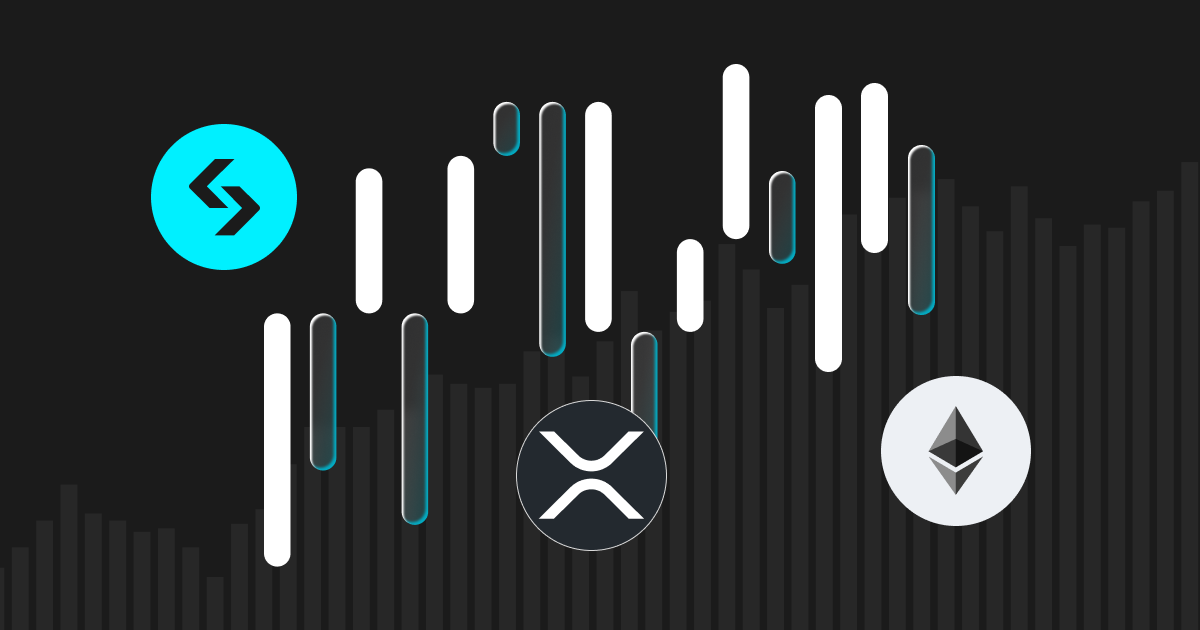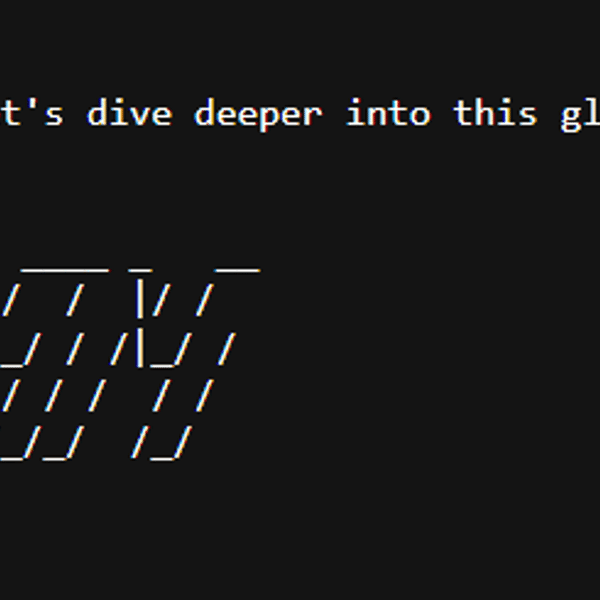Mastering Bot And Strategist Copy Trading On Bitget: Combining Metrics For Smarter Automation
Bitget Bot Copy Trading product consists of two powerful paths: Bots and Strategists. Both simplify crypto trading by offering ready-made strategies that users can copy with just a few clicks. Yet underneath this simplicity lies a key skill: learning how to read the right metrics.
This guide helps you become a smarter copier by explaining how to evaluate bots and strategists using their unique sets of metrics. You'll learn not only what each metric means but also how to combine them for deeper insights, whether you're just getting started or aiming to optimise capital at scale.
Bitget Bot Copy Trading vs Strategist Copy Trading: What's The Difference?
Bot Copy Trading lets users copy a specific trading bot with fixed logic and settings. Each bot operates with a predefined trading pair, direction (e.g., Spot Martingale, Futures Grid-Long), and execution rules. Great for users who want rule-based automation. Meanwhile, Strategist Copy Trading lets users subscribe to human traders (strategists) who actively manage and deploy multiple bots. These subscriptions give you exposure to the strategist's overall performance, including all the bots they create during the subscription period.
Key differences:
● Control: Bots offer fixed logic; Strategists adapt over time.
● Cost: Both bots and strategists may charge subscription fees or not.
● Scalability: Strategists provide diversified exposure across multiple bots and markets.
When to choose what:
● Choose Bots if you want simple automation and want to analyse each bot.
● Choose Strategists if you prefer a curated portfolio and dynamic adjustments.
How To Evaluate And Filter Bots Using Metrics
Before copying any bot, it's essential to look beyond just the profit percentage. The metrics provided on Bitget help you assess not only how a bot has performed, but also how sustainable and copier-friendly that performance really is.
Filtering Metrics
On the main Bots page, you can sort bots by timeframe-based performance, including 7-day, 30-day, 90-day, or all-time profit. In addition to these time filters, Bitget also allows you to refine your search by overall ranking, total bot profit, return on investment (ROI), number of sales, or bot price, with sorting options available in either ascending or descending order.
Displayed Metrics for Each Bot
Each bot displayed on the main Bots page comes with a compact summary to help you make quick, informed comparisons. These metrics offer a snapshot of how the bot behaves, how much trust it has earned from other users, and if it matches your risk appetite and budget.
● Trading Pair tells you what asset the bot is trading, such as XRP/USDT. If you're already holding or bullish on a particular coin, this helps you align your copy strategy accordingly.
● Label (Bot Type + Direction) indicates the strategy and market orientation (like [Futures Grid - Long] or [Spot Martingale - Neutral]). Understanding this helps you anticipate how the bot reacts to market conditions.
● 7-Day Profit (or whichever time filter you've selected between all-time, 7-day, 30-day, 90-day) shows the bot's profitability over the given timeframe, both as a percentage and as an actual USDT figure. This gives you immediate insight into recent performances.
● Latest Trade shows when the bot last executed a trade. If it hasn't traded in a while, that might signal inactivity or a paused strategy.
● Runtime reveals how long the bot has been running since its creation. Longer runtimes suggest the strategy has held up through different market cycles.
● Buyer's Investment Amount is the total capital invested by all copiers. This is an indicator of user confidence and traction.
● Minimum Investment sets the lowest capital you need to start copying. This helps you gauge whether a bot is suitable for your available balance.
● Bot Price tells you whether the bot is free or comes at a cost. Many high-performing bots are free, especially during early promotional phases.
● Sales count how many times the bot has been purchased. A high sales figure usually signals popularity, but you should cross-check it with ROI and user profit for quality assurance.
Tips for Reading This Summary
Don't judge a bot by profit alone. Always check runtime and sales to confirm that performance has been sustained and trusted by others. Bots with extreme profits but low runtime or few sales could be risky short-term plays. On the other hand, bots with moderate profit, long runtime, and steady copier investment often reflect balanced, repeatable strategies.
Inside the Individual Bot Page
Clicking into a bot reveals everything the summary can't, for example, the full story of how it trades, how much real users earned, and how the bot creator's strategy has unfolded over time. This is where smart copiers separate hype from actual performance.
At the top, you'll see the real-time price of the trading pair and its 24-hour change, giving you immediate context on market volatility. Just below, you'll find how much capital has been invested by all buyers, how many users have copied the bot (number of purchases), and the total buyer profit (an instant pulse check on whether this bot is delivering not just in theory, but in users' wallets).
Dig deeper into the Creator PnL Summary, where key metrics can be filtered by time (7D, 30D, 90D, or all-time):
● ROI reveals percentage returns relative to the investment.
● Profit shows the net USDT gained.
● Investment reflects the bot creator's total capital commitment.
● Runtime displays how long the strategy has been active.
● You'll also see the bot creator’s name and their one-line description of the strategy, giving you a glimpse into its logic or goal.
● Two key charts visualise ROI and profit over time, helping you identify whether performance is consistent, peaking, or fading.
Want to know how the bot actually trades? The trade visualization feature uses a candlestick chart to map every entry and exit. You can zoom into different timeframes, such as 15 minutes/1 hour/4 hours/1D, to spot where it scalps, swings, or patiently positions. This is your best tool for decoding the bot's rhythm and behaviour.
Finally, the Top 5 Users Ranked by Profit gives you real-world examples of how other copiers have fared. You'll see their usernames, total PnL, invested amount, ROI, how long they've used the bot, and if they're still running it. This leaderboard teaches patterns in that users who held longer might outperform fast flippers, thus offering you strategic clues on how to copy more effectively.
In short: this page is your command centre. Read it right, and you won't just copy a bot. You'll copy it better.
How to Combine Metrics Like a Pro
Choosing a bot isn't just about chasing the highest number on the screen. The real edge comes from knowing which numbers to combine, and what they reveal together. Below are tailored combinations for beginners and advanced users, designed not just to identify strong bots, but to help you think like a strategist.
1. Beginner-friendly pairings: Clear Signals, Safer Starts
1.1. ROI (7D) and Buyers Investment Amount:
A high short-term ROI suggests recent effectiveness. But it's the total copier investment that shows trust. If a bot is pulling impressive numbers and hundreds of users are putting money behind it, you're likely looking at something tested in the wild.
Use case: You want a fresh-performing bot that other users believe in, not just a theoretical winner.
Memory tip: ROI is your piggy bank growth. Buyer's investment? That’s the crowd vote.
1.2. Runtime and Sales Count:
A bot that has lasted months and has been copied dozens (or hundreds) of times has passed multiple market tests. Sales count alone might show hype. Runtime alone might show endurance. Together, they point to tested resilience.
Use case: You want a reliable performer that didn't just get lucky last week.
Memory tip: Think of runtime as mileage and sales count as fan base. Combine both to find your crypto Toyota — dependable, trusted, and still going strong.
Advanced pairings: Fresh Eyes, Deeper Insights
2.1. ROI of Top 5 Users and Trade Visualisation Candlestick Chart:
Forget average ROI. What really matters is who made money and how. This combo lets you examine the entry timing and trade distribution of successful copiers. Did they profit by copying early? Did the bot perform consistently across market phases?
Use case: You're copying the copier's behaviour, not just a bot.
Memory tip: Top 5 ROI = leaderboard secrets. Trade chart = X-ray of bot psychology. Together, it's like watching replays of winning plays before jumping on the field.
2.2. Total Buyer Profit and Minimum Investment Required:
This combo reveals how accessible the bot's success is. If a bot generated large copier profits despite requiring a small capital entry, it indicates efficiency and mass-scale performance.
Use case: You want to find bots with high impact per dollar. They are great for those scaling small capital or diversifying across multiple bots.
Memory tip: Total buyer profit = harvest size. Minimum investment = seed cost. Big crop from a tiny seed? That’s a smart farm.
2.3. Pro tip for advanced users:
Most people stop at ROI. Don't.
The deeper you go into copier performance and execution patterns, the more you can copy with conviction, not just curiosity. Great metrics aren't flashy; they're predictive when read in the right pairs.
How To Evaluate And Filter Strategists Using Metrics
Strategists on Bitget are portfolio builders with track records that span multiple strategies, asset classes, and market cycles. Evaluating them requires a broader lens than when assessing a single bot. The right strategist can offer adaptive intelligence, but only if you know how to interpret their performance data across time.
Filtering Options
On the main Strategists page, you can sort available profiles using several key metrics to find those that align with your goals. Profit-based filters allow you to view strategist performance over different time frames (7-day, 30-day, or 90-day) depending on your desired outlook. Additional filters include total bot profit, win rate, and subscription price, which you can rank in ascending or descending order to quickly identify the most cost-effective or high-performing strategists on the platform.
Summary Metrics for Each Strategist
Each strategist listed on the main page comes with a concise set of metrics that gives you a snapshot of their trading style, effectiveness, and current capacity. The username shows you the identity of the trader behind the strategies, serving as a reference point for further exploration. Their profit, shown for 7, 30, or 90 days depending on your selected filter, reflects the total earnings generated by all bots they launched during that period — useful for judging recent performance.
The win rate reveals what percentage of their bots ended up profitable, helping you assess consistency across multiple strategies. You'll also see the number of bots created, which gives a sense of their activity level and market engagement. Active bots tells you how many strategies are currently running under their management, while the subscription slot indicator shows whether they still have room for new followers or have reached full capacity.
Inside the Individual Strategist Page: The Mind Behind the Bots
This is where you go beyond the surface and start understanding how a strategist thinks, builds, and performs. The individual strategist page is your deep dive into strategy logic, execution patterns, and real copier outcomes.
Right at the top, the header metrics show you the strategist’s real-time footprint. You'll see how many subscribers they currently have versus their limit (important for gauging demand and exclusivity). Their total bot PnL gives you the combined earnings across all strategies, while subscribers' PnL shows how well their followers are doing. See this as a key indicator of copier success, not just creator performance. You'll also see their join date, which offers quick context on their experience and consistency on the platform.
1. The [Analytics] tab: The Strategist's Trading DNA
This section breaks down every meaningful signal behind the strategist's history and trading focus. You'll find:
● Bot PnL (7D/30D/90D): Analyse their earnings across different timeframes.
● Subscribers' PnL: See if their followers are gaining or bleeding. This tells you more than ROI ever could.
● Bot Usage: The number of bots they actively run during each period, i.e. a reflection of their deployment frequency.
● Win Rate: Percentage of bots that ended up profitable, including both active and completed ones.
● Bot Sales: The total number of paid bot copies, which is a rough signal of market validation.
● Bot Profit Distribution: Visualised breakdown of where their bot profits came from (Futures Grid, Spot Grid, etc.).
● Crypto Preferences: Shows which coins they focus on, like BTC, ETH, LINK, etc. This metric is extremely critical for aligning with your market view.
● Runtime Distribution: Reveals how long their bots tend to stay active. Are they scalping or swinging?
● Bot Usage Activity: Tracks how frequently the strategist launches or operates bots on a daily basis.
Each of these metrics helps you assess not only if the strategist is profitable, but how they approach risk, market timing, and asset selection.
2. The [Bots] tab: All Strategies, Fully Visible
This tab displays every bot the strategist has launched, both currently active and already completed. Think of it as their public trading journal. By reading this tab carefully, copiers can trace a strategist's real trading patterns. Are they launching many short-term bots with mixed results, or a few high-conviction ones with consistent returns? Are they experimenting wildly, or do they show refined focus on select pairs and bot types?
For each bot, you'll see:
● Trading Pair: Reveals what the bot focused on — whether it's a stable BTC/USDT pair or a more volatile altcoin like SOL or LINK. This helps you identify the strategist's risk appetite and market preferences.
● ROI: The percentage return the bot generated. High ROI bots indicate potential skill, but you should also look at how many such bots the strategist has delivered, not just outliers.
● Profit: Shows the net gain in USDT. It helps quantify success beyond percentages, which can sometimes be misleading if the capital deployed was small.
● Runtime: Tells you how long the bot was active. A high-ROI bot that only ran for 2 hours may not be as impressive as a consistent performer that ran for 30 days.
● Creation or Termination Time: Allows you to link bot performance to broader market trends. Was the strategist effective during volatile periods? Did they time the market well?
● Subscriber Count: Indicates how many users followed the bot. While not always a quality guarantee, it signals how much community confidence the strategy had at launch.
3. The [Subscribers] tab: Proof Through Results
The final tab is the subscriber leaderboard, where you can see the top-performing copiers ranked by their own PnL. It's a powerful mirror: if multiple followers are winning consistently, it's a strong sign the strategist is skilled and scalable.
How to Combine Strategist Metrics for Sharper Copying Decisions
Great strategists don't just build winning bots; they build systems. But not every system is right for every copier. The best copiers are the ones who stop asking "Who made the most?" and start asking, "Who wins the way I want to win?". The right metric pairings help you see through the numbers and into the strategist's logic. Use them wisely, and you'll copy purpose.
1. For beginners: Start With Proof That Pays
1.1. Win Rate and Subscribers' PnL:
A strategist may have a strong win rate, but unless that success translates into gains for followers, it's empty data. Subscribers' PnL gives you the real-world result: are users like you actually profiting from copying them?
Use case: Ideal for users who want reassurance that the strategist's skills are copyable.
Memory tip: Win Rate = the strategist’s report card. Subscribers’ PnL = the class average.
1.2. Total Bot PnL and Average Bot Runtime:
This combination tells you if the strategist's profit was earned through fast flips or sustained strategies. A high PnL with long average runtimes signals discipline and structured logic instead of mere lucky timing.
Use case: Great for copiers who prefer bots that don't require frequent switching or chasing volatility.
Memory tip: Bot PnL = the prize. Runtime = the path. Big prize + long path = trustworthy trekker.
2. For advanced users: Look Where Others Don't
2.1. Crypto Preference Concentration and Win Rate Consistency Across Timeframes:
Most copiers check coin allocation out of curiosity. But if a strategist heavily favours a few assets (e.g., 70% BTC, 20% ETH) and maintains strong win rates across 7D, 30D, and 90D periods, it reveals mastery over that market. They're dominating familiar terrain.
Use case: Best for users who want to align with specialists/strategists who excel by staying in their lane.
Memory tip: Crypto Preference = their battlefield. Win Rate Consistency = their win streak. If they're snipers in one field, follow their aim.
2.2. Subscriber PnL Leaderboard and Runtime Distribution Spread:
Look at who is making the money, and how long they're staying in bots. If top subscribers are earning more from bots with mid- to long-term runtimes, it suggests the strategist rewards patience. On the other hand, if short-term copiers dominate the leaderboard, the strategist might be better for quick tactical plays.
Use case: Ideal for tailoring your own copy strategy: hold long or trade short based on what has worked for others.
Memory tip: Leaderboard = the scoreboard. Runtime spread = the playbook. Use both to copy the right moves, not just the top names.
Combining Bots And Strategists: A Smarter Copy Trading Strategy
The best copy trading is designed. While Bitget gives you access to both individual bots and strategist portfolios, that doesn't mean you should mix them blindly. Not every combination leads to better results. In fact, chasing both paths without clarity can dilute your strategy rather than strengthen it.
But for copiers who take the time to observe the metrics, compare behaviours, and understand each tool's strengths, there's a powerful opportunity to build a layered portfolio that fits their goals. Use bots when you want speed, specificity, and precise entry logic. Lean on strategists when you prefer a broader, adaptive approach guided by someone else's trading system. When combined with discipline, not impulse, they can become complementary forces in a well-constructed copy strategy.
Remember: copy trading isn't about mimicking the biggest ROI on the screen. It's about recognising repeatable logic, or, in other words, systems that scale, endure, and make sense for your capital, timeframe, and risk comfort. So if you choose to blend bots and strategists, don't do it by default. Connect the dots and do it by design.
Follow Bitget X to win 1 BTC
Bitget Academy2025-05-23 09:15























































































![BitTorrent [New]](https://img.bgstatic.com/multiLang/coinPriceLogo/c87b5c29752b2123cca40f4dd2c6b6501710522527061.png)












































